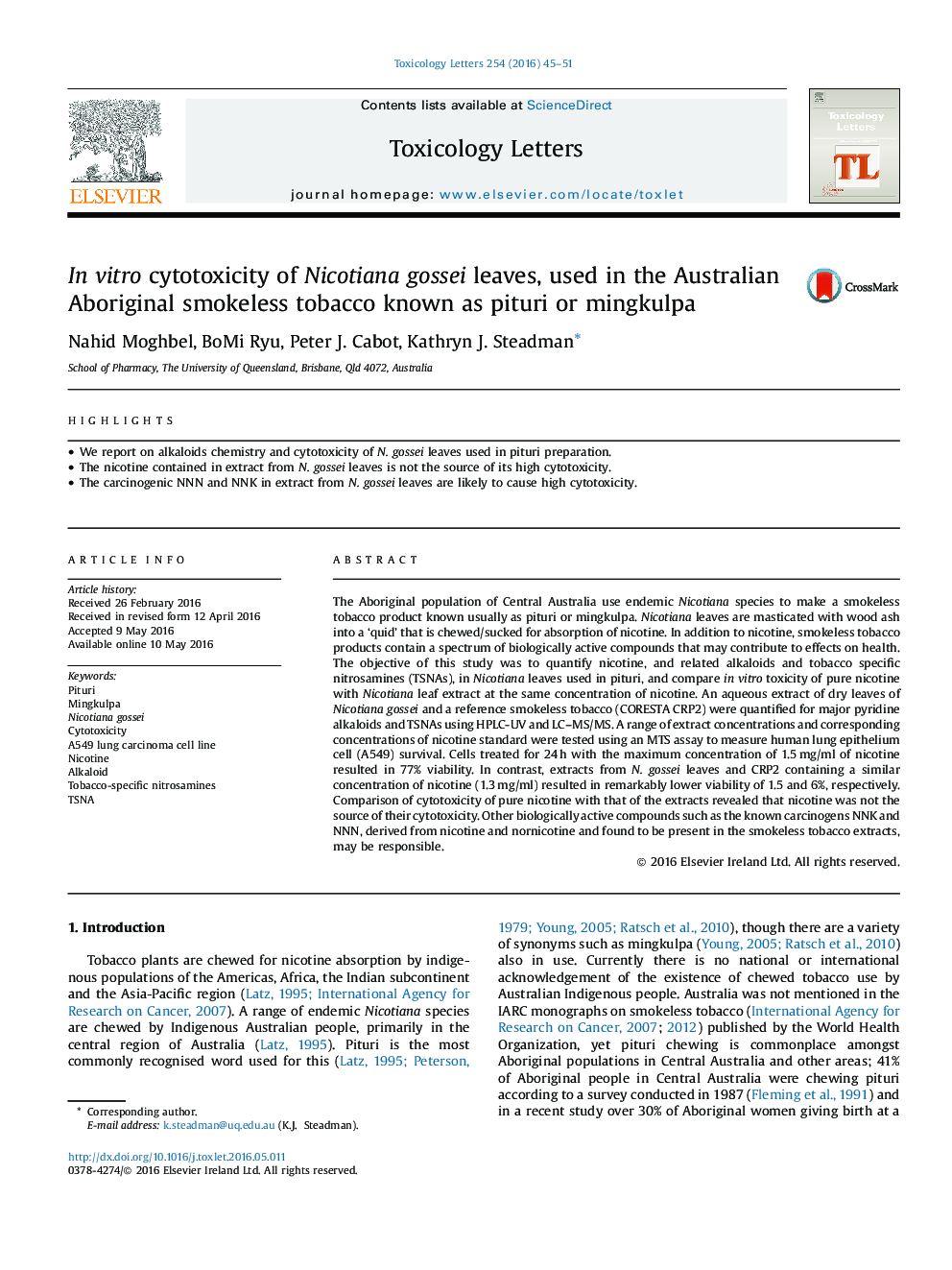| کد مقاله | کد نشریه | سال انتشار | مقاله انگلیسی | نسخه تمام متن |
|---|---|---|---|---|
| 5859776 | 1562619 | 2016 | 7 صفحه PDF | دانلود رایگان |
- We report on alkaloids chemistry and cytotoxicity of N. gossei leaves used in pituri preparation.
- The nicotine contained in extract from N. gossei leaves is not the source of its high cytotoxicity.
- The carcinogenic NNN and NNK in extract from N. gossei leaves are likely to cause high cytotoxicity.
The Aboriginal population of Central Australia use endemic Nicotiana species to make a smokeless tobacco product known usually as pituri or mingkulpa. Nicotiana leaves are masticated with wood ash into a 'quid' that is chewed/sucked for absorption of nicotine. In addition to nicotine, smokeless tobacco products contain a spectrum of biologically active compounds that may contribute to effects on health. The objective of this study was to quantify nicotine, and related alkaloids and tobacco specific nitrosamines (TSNAs), in Nicotiana leaves used in pituri, and compare in vitro toxicity of pure nicotine with Nicotiana leaf extract at the same concentration of nicotine. An aqueous extract of dry leaves of Nicotiana gossei and a reference smokeless tobacco (CORESTA CRP2) were quantified for major pyridine alkaloids and TSNAs using HPLC-UV and LC-MS/MS. A range of extract concentrations and corresponding concentrations of nicotine standard were tested using an MTS assay to measure human lung epithelium cell (A549) survival. Cells treated for 24Â h with the maximum concentration of 1.5Â mg/ml of nicotine resulted in 77% viability. In contrast, extracts from N. gossei leaves and CRP2 containing a similar concentration of nicotine (1.3Â mg/ml) resulted in remarkably lower viability of 1.5 and 6%, respectively. Comparison of cytotoxicity of pure nicotine with that of the extracts revealed that nicotine was not the source of their cytotoxicity. Other biologically active compounds such as the known carcinogens NNK and NNN, derived from nicotine and nornicotine and found to be present in the smokeless tobacco extracts, may be responsible.
Journal: Toxicology Letters - Volume 254, 8 July 2016, Pages 45-51
